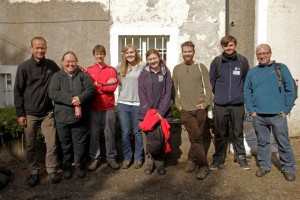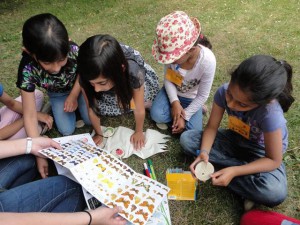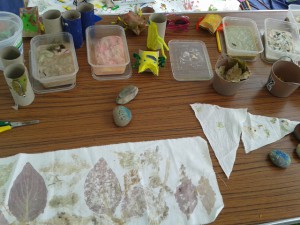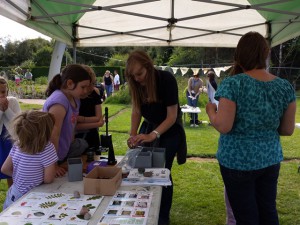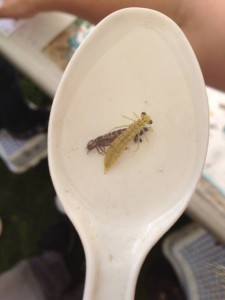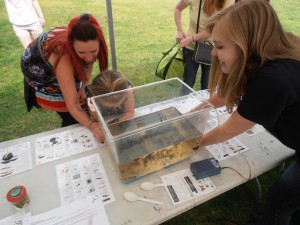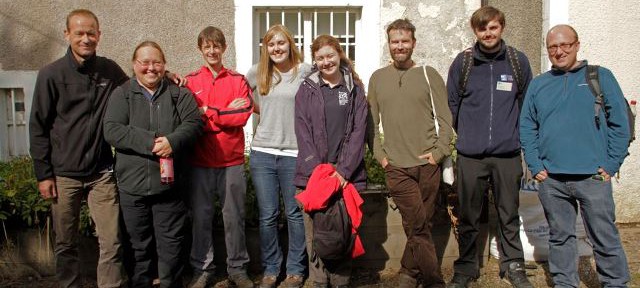
Hello there, I’m Rebecca, one of the new Discovering Nature Trainees for The Conservation Volunteers based in Stirling, part of the coastal communities project.
Over the next year, I will be delivering citizen science and natural play projects within and around the Inner Forth area. One of the main aims we hope to achieve is for community groups to become more confident in identifying wildlife and to understand more about their ecology and conservation. By allowing children to play and explore the outdoors, natural play is another great way for kids to learn about their natural environment.
Discover Me…
As part of my work this summer, I’ve been getting involved in one of TCV’s fantastic natural play projects: Discover Me. Discover Me is all about connecting and inspiring children and families with the outdoors and their local environment through the balanced deliverance of adult led and child initiated activities. Wildlife and biodiversity themed games, natural art activities and good old bug hunts are just some of the exciting activities that we’ve been getting kids and families involved in this summer.
Even though I am still new to this role, I can already see what hugely positive influences natural play can have on kids, families and community groups. I have seen children overcome obstacles by problem solving and working together as a team, become better friends, become closer to their families, increase their self confidence, and become ever more interested in the environment and natural world which surrounds them. I have seen the wildlife based games and activities spark their curiosity about nature, conservation and why something as teeny tiny as a wee beastie is just as important as conserving wild animals in the rainforest:
“why does it have spots?”
“do bugs camouflage themselves to hide from predators?”
“where would the penguins and polar bears go if ALL of the ice melted?”
As well as learning more about the environment, kids and family groups taking part in the sessions have used the green spaces around them to play and explore more: building dens, making secret trails, using natural materials like flowers, twigs and leaves to make art…who needs a climbing frame when you have trees outside?… who needs paint when you have all the colours of nature right on your door step?…
…All you need is the outdoors, and a bit of imagination!
Citizen Science…
The other part of my time at TCV this year will be looking at getting community groups involved in citizen science or, wildlife recording. As a personal interest of mine to learn more about identifying and recording wildlife, I am really excited to be a part of this project with TCV and OPAL (Open Air Laboratories). OPAL is a UK-wide (just starting in Scotland this year!) citizen science initiative that allows everyone interested to get hands-on with nature and start recording the wildlife around them. With a wide range of different surveys to get involved with: Biodiversity survey, Bugs Count survey, Air Quality, Tree Health, Water survey and Soil survey ANYWHERE in the UK, there is something to suit everyone.
This year I’m hoping to work with communities in and around the Inner Forth, and am hoping to introduce some of these exciting citizen science surveys to the area. Anyone can become a citizen scientist – from recording the first ladybird seen in Spring to a rare fungi in a new location – everything and anything matters and is important to research. Without citizen scientists, we would not know today what we know about the effects of climate change, or what species of bird or insect may be threatened. Without recording wildlife and the environment, we wouldn’t know how to conserve and protect it.
If you’re part of a community around the Firth of Forth area (or even if you’re not!) and would like to know more about some of the work that TCV can offer families and community groups, I would love to hear from you!
Thanks guys, I’ll post again soon.
Rebecca (r.cairns@tcv.org.uk)
(My new role is part of the Forth Coastal Project and the Inner Forth Landscape Initiative, funded through the Coastal Communities Fund and Heritage Lottery Fund.)
